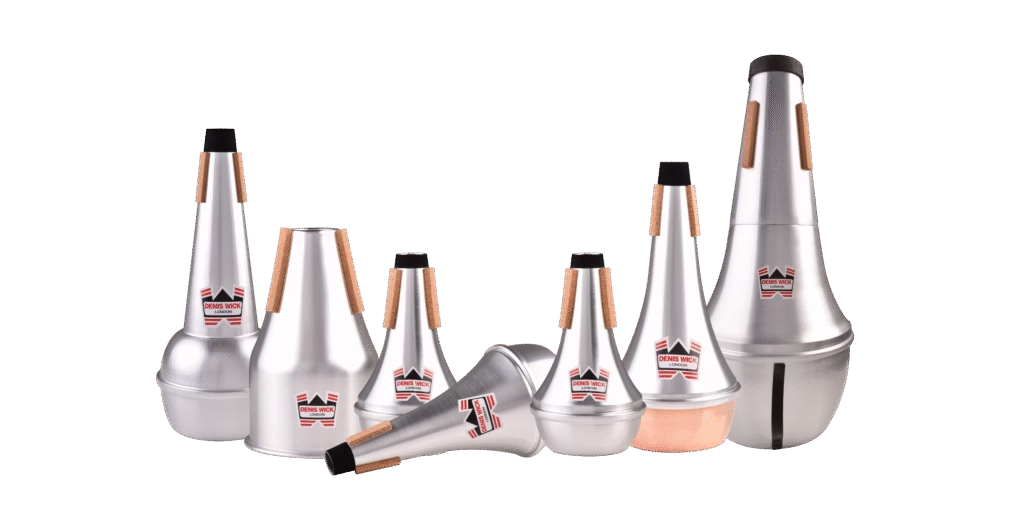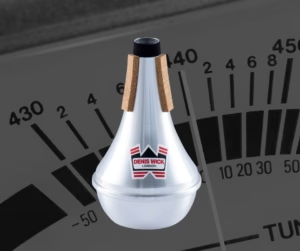How does design affect mute tuning?
When Denis Wick designed his first trumpet straight mute in the 1960s, and later followed by mutes for trombone and the rest of the brass section, he wasn't just trying to improve a tool. He was trying to solve a fundamental problem that brass players faced every day: intonation. At the time, most trumpet straight mutes were notoriously sharp. It was considered normal for players to compensate by adjusting their embouchure or tuning slides every time they inserted a mute.
Wick, then a principal trombonist with the London Symphony Orchestra, believed musicians deserved better. He envisioned a mute that would not only eliminate the constant tuning adjustments but also produce a more powerful, characterful sound suitable for the demanding orchestral repertoire of the 20th century.

The Design That Changed the Game
The very first Denis Wick mute was the model DW5504 trumpet straight mute, still in production today. Wick’s key insight was that most mute designs of the era effectively shortened the vibrating length of the air column inside the instrument, which is why they made the pitch rise. His solution was simple but groundbreaking: make the mute larger. By increasing the length and volume of the mute, he was able to preserve the natural pitch of the instrument while simultaneously enhancing projection.
This larger design offered two significant advantages:
- Better Intonation: By extending the vibrating air column, the mute allowed the trumpet to play in tune without compensating.
- Greater Power: The increased volume inside the mute created a fuller, more penetrating tone, essential for cutting through orchestral textures in fortissimo passages, especially in works by Bartók or Prokofiev.
From Testing Room to Concert Hall
The Denis Wick mute designs weren't developed in isolation. They were tested and proven in real musical contexts. One of the most remarkable moments in the mute's history came during a London Symphony Orchestra recording session in the 1960s for composer Benjamin Britten. When Denis was developing the trombone straight mute, he brought multiple prototypes to the session. Britten himself chose the version that would ultimately become the production model still used today.
This mute, like its trumpet counterpart, was designed with both sound and practicality in mind. It was compact enough for Wick to grip and insert quickly during fast mute changes, but still large enough to maintain a rich, in-tune sound.
Denis Wick Tips Blog
Sign up for the Denis Wick Tips Blog for our newest advice, discussion, and updates from the Denis Wick Artist Group and community.
The Legacy Lives On
Even decades later, the impact of Denis Wick’s designs continues to be felt. Stephen Wick, Denis’s son, recalls demonstrating the trumpet mute to a skeptical player at a Midwest Band Clinic. The musician insisted that all trumpet mutes were sharp, until he played the Wick mute and discovered it was perfectly in tune. “He was so used to trumpet mutes being sharp,” Stephen said, “that he actually pitched slightly high at first. I said, just blow straight through and it’ll sit at the right pitch.”
That moment of revelation is something many brass players have experienced when trying a Denis Wick mute for the first time. The unique combination of precise intonation, powerful tone, and practical design has made these mutes a trusted choice for musicians around the world.
Conclusion
The enduring popularity of Denis Wick straight mutes isn’t just about tradition. It’s about innovation that still makes a difference today. Designed to solve real musical problems, tested in world-class orchestras, and refined with feedback from leading composers and performers, these mutes represent a perfect blend of form, function, and musicality. Whether you’re in the practice room or the concert hall, there’s a reason Wick mutes still lead the way. They simply play in tune and they do it with power and character.
Learn More
Watch the original interview with Stephen Wick concerning the creation and development of the world-famous Denis Wick Mute.











